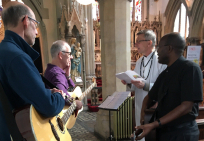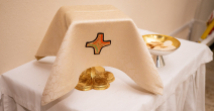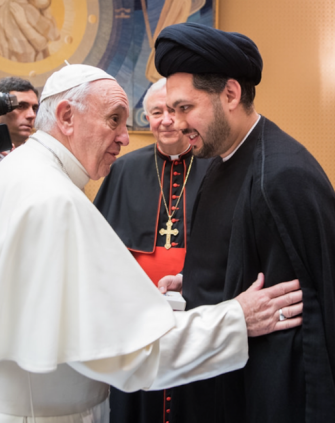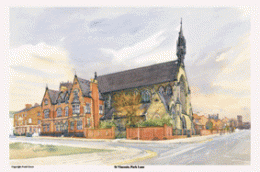Jesus – ‘Isa (2)
Bible
In the Gospel of Luke we find the following accounts:
2:1-29 – the birth of Jesus in Bethlehem and the visit of the shepherds.
2:21 – the circumcision of Jesus and his naming.
2:22-28 – the presentation of Jesus in the Temple; the presence of
Simeon and Anna.
2:39-40 – the hidden life of Jesus at Nazareth.
2:41-52 – the finding of the young Jesus in the Temple.
In the Gospel of Matthew the following accounts are given:
2:1-12 – the visit of the Magi (Wise Men) to Bethlehem.
2:13-18 – The flight into Egypt; the massacre of the innocents
2:18-22 – The return to Nazareth.
Qur’an
The following account is given of the birth of Jesus:
She [Mary] withdrew to a distant place and, when the pangs of birth drove her to [cling to] the trunk of a palm tree, she exclaimed, “I wish I had been dead and forgotten long before all this!” but a voice cried to her from below, “Do not worry, your Lord had provided a, stream at your feet and, if you shake the trunk of the palm tree towards you, it will deliver fresh ripe dates for you, eat drink, be glad, and say to anyone you may see: “I have vowed to the Lord of Mercy to abstain from conversation, and I will not talk to anyone today.” (Q 19:22-26)
The absence of history and geography is a feature of the Qur’an, in contrast to Luke who, at the beginning of chapter two, gives historical and geographical details. There is no mention of a manger in the Qur’an and the shepherds do not appear. There is a palm tree giving fruit, ripe dates, which a Muslim doctor and popular spiritual writer affirmed were what a woman just having given birth exactly needed. (A palm that bends down to give fruit to Mary figures in the apocalyptic gospel of pseudo-Matthew [ch. 20], but this in the context of the flight into Egypt).
The sura continues with what happens after the birth of Jesus:
She [Mary] went back to her people carrying the child,
This would normally be the task of the father but in the case of Jesus there is no father.
And they said, Mary! You have done something terrible! Sister of Aaron! Your father was not a bad man; your mother was not unchaste!
With regard to the title ‘Sister of Aaron’, some scholars think that there may be blending between Mary the mother of Jesus and Mary the sister of Moses and Aaron. But since it is mentioned that Mary’s cousin, Elizabeth, was of priestly descent, Mary too would be descended from Aaron, and so could be called ‘sister of Aaron’.
She pointed at him [the child]. They said, “How can we converse with an infant?
Yusuf Ali translates “to one who is a child in the cradle” (closer to the Arabic).
The child has already performed this miracle from the foot of the palm.
[But] he said, “I am a servant of Go46).d. He has granted me the Scripture; made be blessed wherever I be” (Q 19:27-32).
During the Annunciation, according to sura 3, the angels had said to Mary:
He will speak to people in his infancy and in his adulthood (Q 3:46).
They had announced to her before:
Mary, God gives you news of a Word from Him, whose name will be the Messiah, Jesus son of Mary, who will be held in honour in this world and he next, who will become one of those brought near to God.
(Q 3:45)
Jesus has the name ‘Word from God’, not Word of God, not the Logos that John speaks of (cf. the prologue of John’s gospel; Jn 1:1-14). It is more likely a reference to the ‘creative word’ of God: as the angels say to Mary after her question as to how she could have a son when no man has touched her:
“This is how God creates what He will: when He has ordained something, He only says ‘Be’ and it is” (Q 3:47).
There is no qur’anic equivalent of Mary’s Fiat, of which there is no need.
On the name ‘Messiah’ see Parinder, Jesus in the Qur’an, pp.30-34.










Make A Comment
Comments (0)